South Africa is one of the most bird-rich countries in the world, and nowhere is this more evident than in the incredible range of types of bird nests you can find. From delicate cups to sturdy mud structures, each nest reflects the needs, habits, and clever design skills of its builder. Whether you are new to birdwatching or keen to make your garden bird-friendly, learning about nests adds another fascinating layer to birding.
Why birds build nests
Birds build nests primarily to provide a safe place for their eggs and chicks. The design and location depend on the species. A Cape Sparrow may line a simple grass dome in a shrub, while a Fish Eagle builds a massive stick platform in a tall tree. Nests are more than homes; they are survival strategies tailored to each bird’s lifestyle.
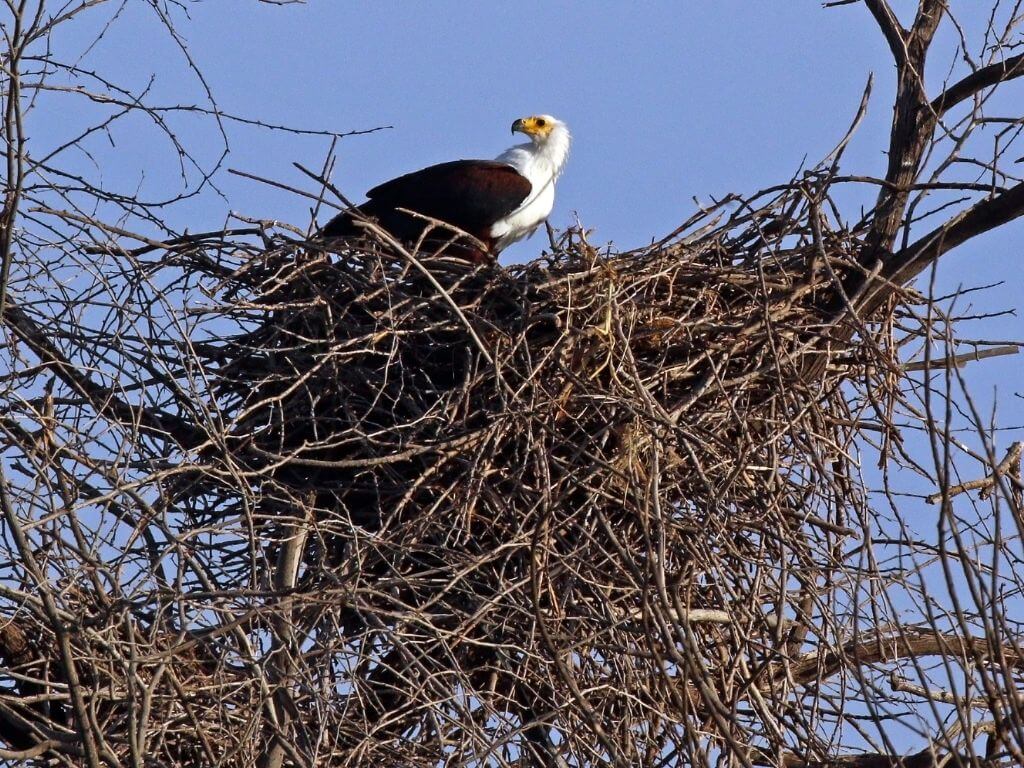
Common types of bird nests
There are many types of bird nests in South Africa. Here are some of the most common:
Cup nests
These classic, cup-shaped nests are built from twigs, grasses, rootlets, and moss. Birds like Cape Robins and Bulbuls line them with softer materials for extra comfort.
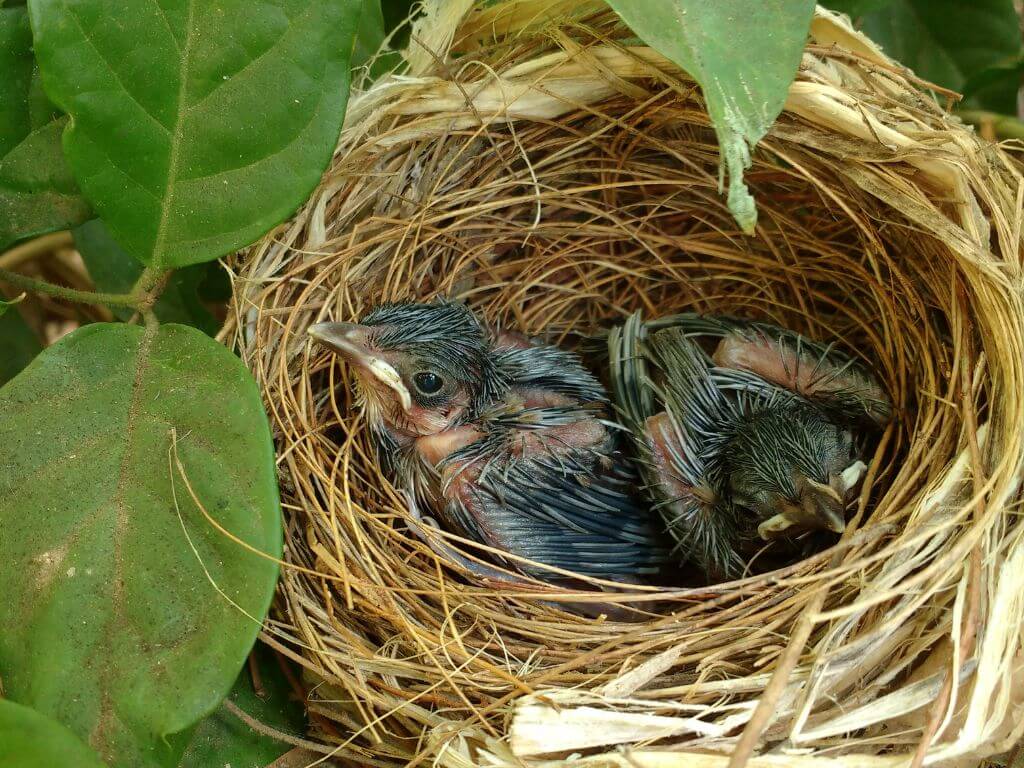
Cavity nests
Hornbills, parrots, owls, and kingfishers often use natural cavities in trees or old barbet holes. Some hornbills even seal the female inside with mud for safety.
Woven nests
Weaver birds are master architects. Their intricate, basket-like woven nests usually hang with an entrance at the bottom, making it tricky for predators to get in.
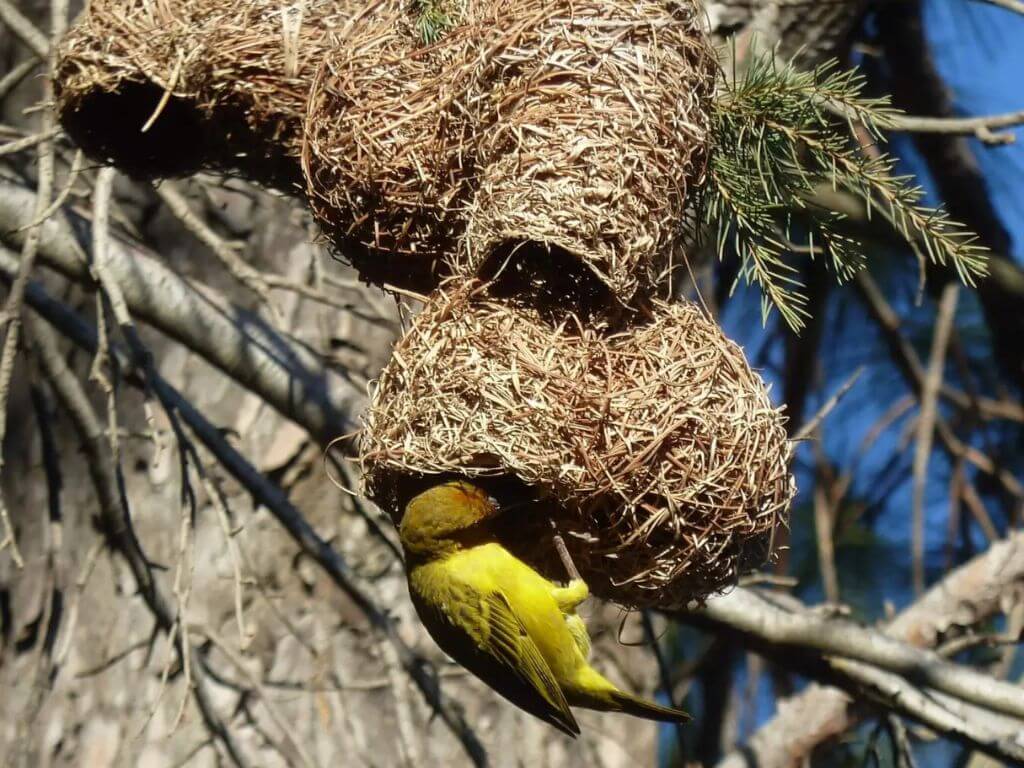
Platform nests
These are large, flat structures built on trees, cliffs, or even shallow water. Fish Eagles and Hamerkops are known for reusing and adding to these nests year after year.
Ground nests
Birds like the Southern Ground Hornbill and African Thick-Knee rely on simple scrapes or depressions in the ground for their nesting sites.
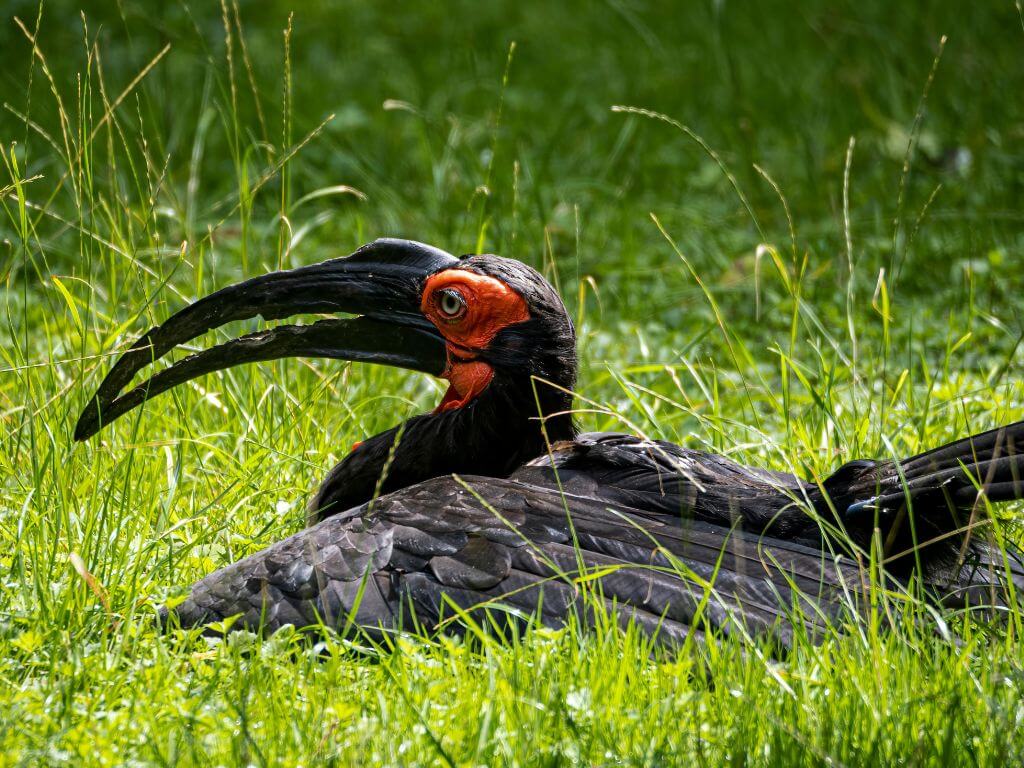
Communal nests
Some species, including Southern Ground Hornbills and Sociable Weavers, nest cooperatively. Many individuals help raise chicks in one shared structure.
Hanging nests
Village Weavers make suspended nests that dangle from branches, often blending in with leaves for camouflage.
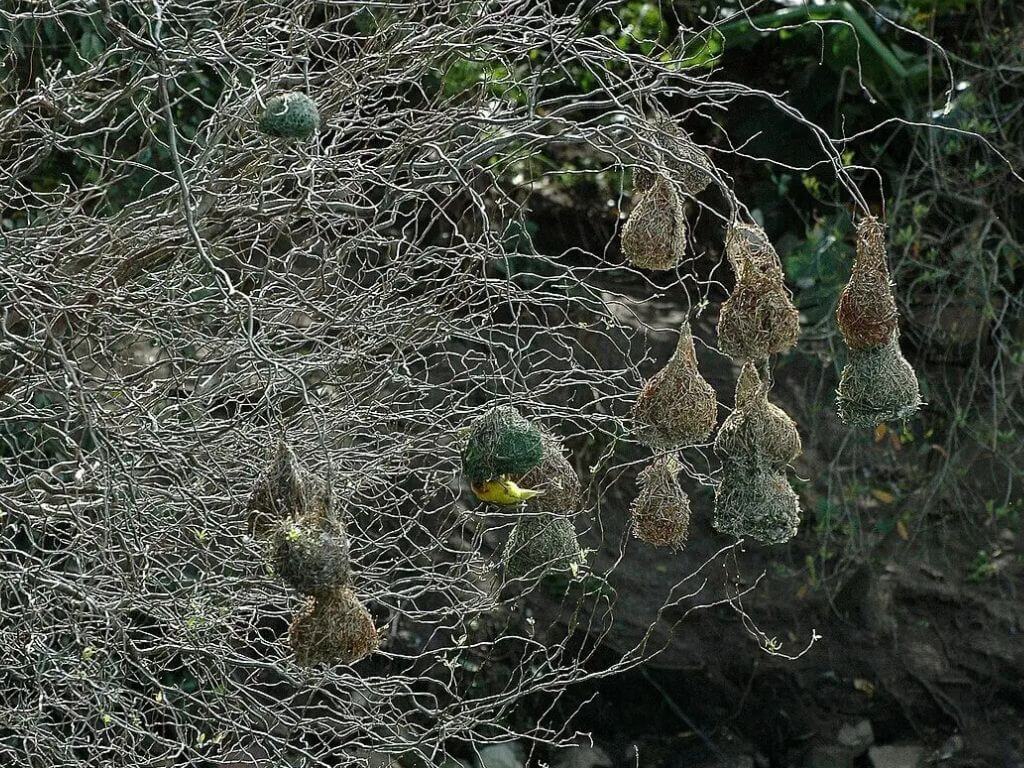
Termite mound nests
Mangrove Kingfishers and some bee-eaters dig cavities into arboreal termite mounds, using the heat inside to incubate their eggs.
Mud-pellet nests
Swallows and Martins are skilled at using mud pellets to build sturdy nests on walls, under eaves, or rocky overhangs.
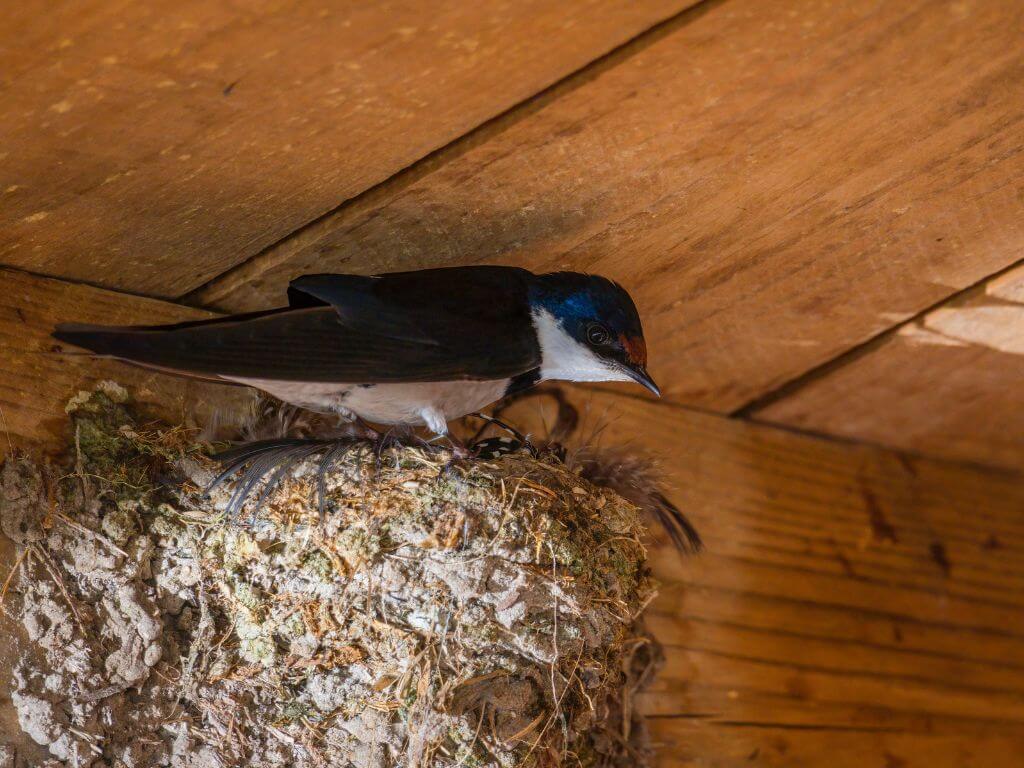
Birds that weave
Weavers are some of the most celebrated nest builders in the world. The Southern Masked Weaver creates tightly woven hanging nests that can sway from acacia branches in large colonies. Red Bishops build similar nests among reeds, often turning whole wetlands into a blaze of colour during breeding season. These types of bird nests are not just shelters but also displays to attract mates, and the neater the weave, the more attractive the male.
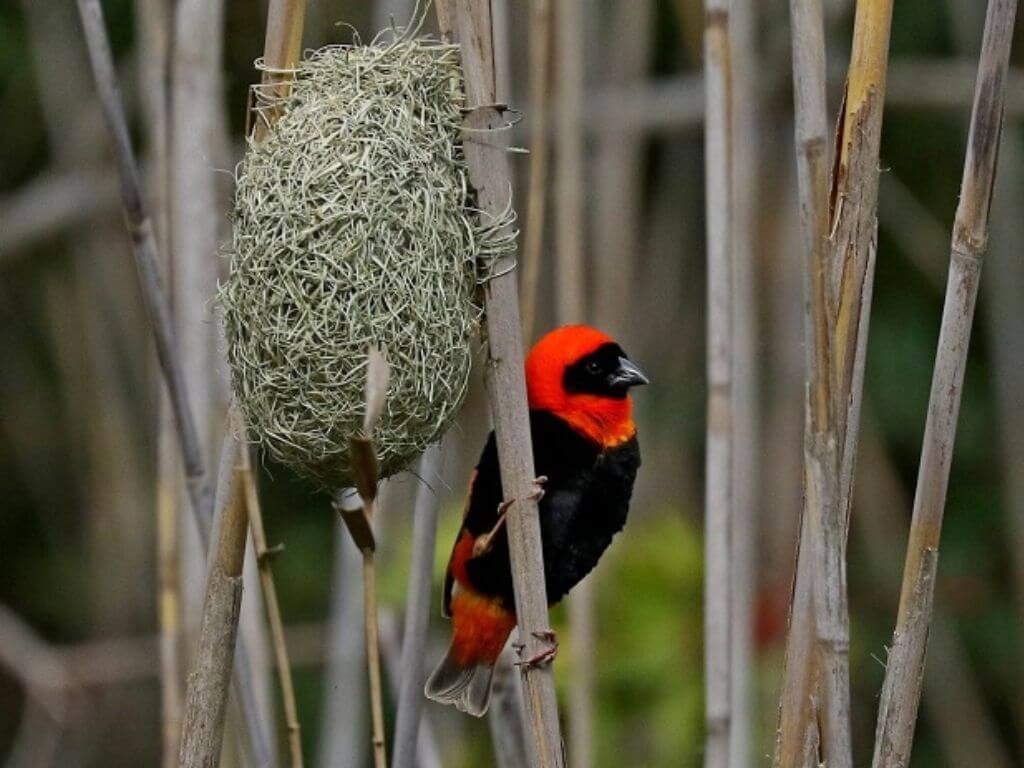
Birds that reuse nests
Not all birds build from scratch each year. Hadedas are well known for reusing and repairing their platform nests of sticks, often in tall trees or even urban gardens. Black Sparrowhawks may also reuse their large stick nests, adding fresh greenery each season. Reusing is an energy-saving strategy, but it can also attract parasites if old nests are not carefully maintained.
Ground nesters vs tree dwellers
Ground nesters like the Spotted Thick-knee, Crowned Lapwing, and nightjars rely heavily on camouflage. Nightjars take this to the extreme with some laying their eggs on leaf litter in dappled shade, while others, like the Freckled Nightjar, nest directly on bare granite that matches their plumage. Nightjars even return to the same nesting site year after year.
Tree dwellers, on the other hand, such as doves, thrushes, and African Paradise Flycatchers, choose elevated sites that offer safety from predators. Recognising these very different types of bird nests shows just how diverse South African nesting behaviour can be.
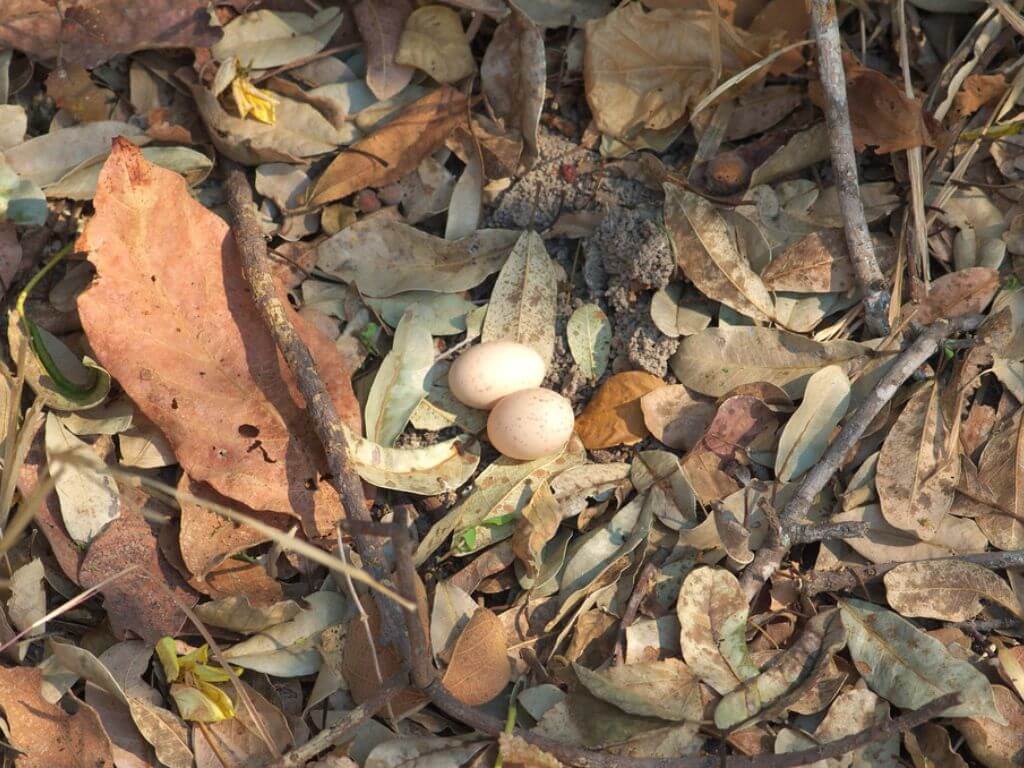
When birds build nests
Most nesting in South Africa happens in spring and summer when food is abundant. However, some species, such as the Cape Weaver, may nest multiple times in a season. The Cape Glossy Starling often starts early, using tree cavities or old woodpecker hollows to raise its chicks. Understanding nesting times can help birders know when to watch quietly for activity around trees, reeds, or shrubs.
How to spot nests without disturbing them
Finding nests is exciting, but always prioritise the bird’s safety. Use binoculars to observe from a distance, avoid touching or moving branches, and never linger too long near an active nest. Many birds, like the Fiscal Shrike, are territorial and will give alarm calls if you are too close.
If disturbed repeatedly, adults may abandon the nest, leaving eggs or chicks vulnerable. In some cases, predators notice the commotion and follow human scent or movement to the nest. By keeping your distance, you help ensure the chicks survive and the adults continue to care for them.

Materials birds use
Birds are resourceful builders. Sunbirds use spider webs, Cape Sparrows weave grass, Hamerkops create giant nests of sticks and mud, and swallows plaster mud cups under eaves. You can help by leaving out natural fibres, grass cuttings, or small twigs.
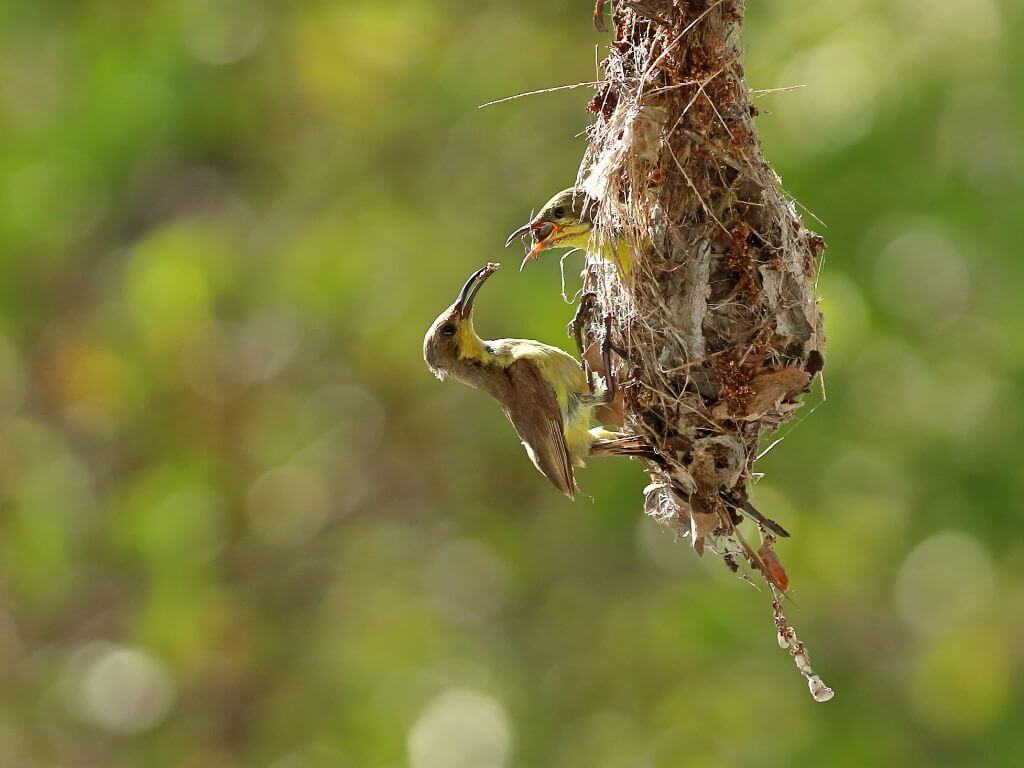
Bird-friendly garden tips
To support nesting season in your garden:
Provide food: Try Westerman’s wild bird seed and suet balls to keep parent birds strong.
Provide water: A shallow birdbath helps birds drink and bathe.
Provide shelter: Indigenous trees like Wild Olive, Karee, or Cape Ash offer natural nest sites.
For more tips, read Bringing Nature Home: The Joy of Garden Birds in Your Backyard.
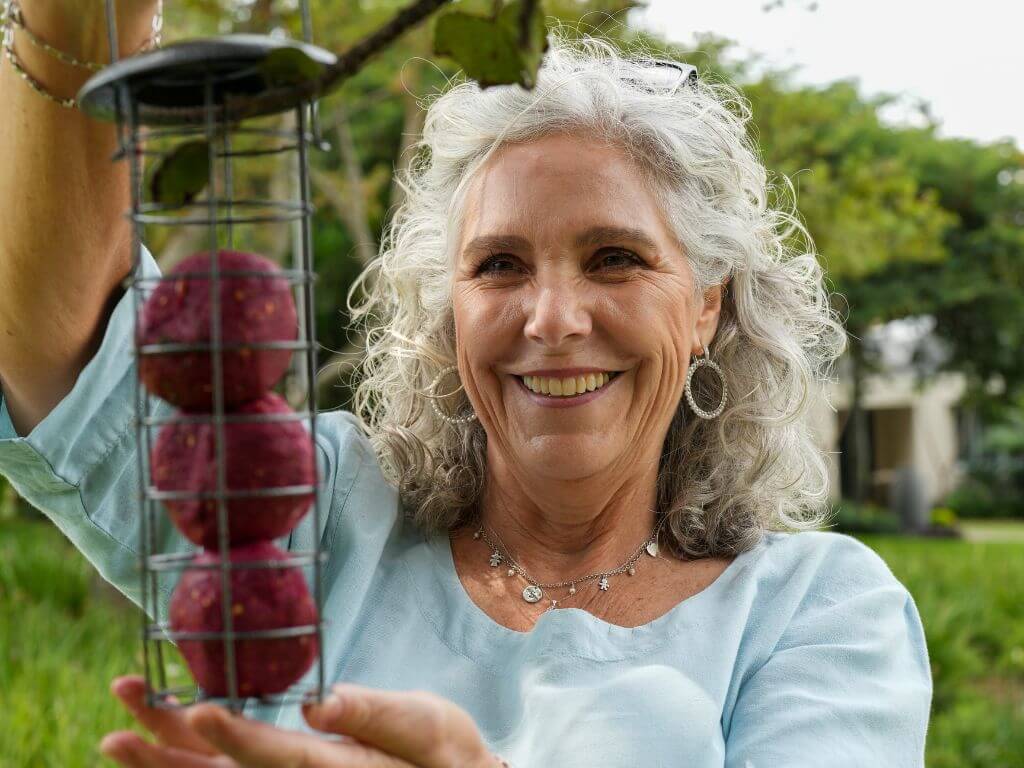
Support BirdLife South Africa’s Bird of the Year
This year, you can help protect one of South Africa’s rarest species by voting for the Botha’s Lark as BirdLife South Africa’s Bird of the Year. The Botha’s Lark Project safeguards this endangered grassland bird and its fragile ecosystem. Thanks to ongoing work, there have been confirmed sightings at four locations, the first in over 18 months, along with rare breeding success. Your vote shows support for conservation and the future of South Africa’s birds.
Learn more and cast your vote with BirdLife South Africa today.
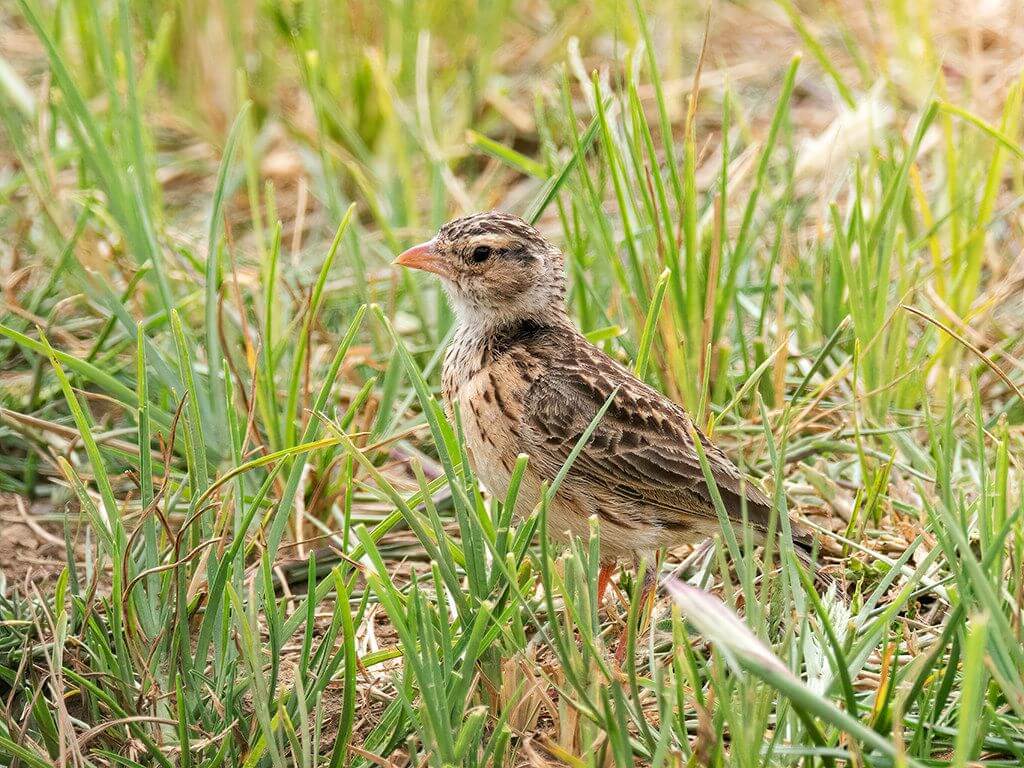
Discover daily birding facts and ideas on our Facebook and Instagram pages.